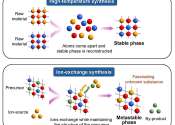Scientists develop brain-inspired memory material
Our brain does not work like a typical computer memory storing just ones and zeroes: thanks to a much larger variation in memory states, it can calculate faster consuming less energy. Scientists of the MESA+ Institute for ...









